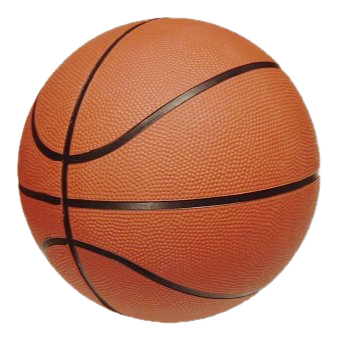| Pittsburgh Condors | |||||
|---|---|---|---|---|---|
| [[File:{{{image}}}]] | |||||
| Conference | None | ||||
| Division | Eastern Division | ||||
| Founded | 1967 | ||||
| History | Pittsburgh Pipers 1967-1968 Minnesota Pipers 1968-1969 Pittsburgh Pipers 1969-1970 Pittsburgh Condors 1970-1972 | ||||
| Arena | Pittsburgh Civic Arena | ||||
| City | Pittsburgh, Pennsylvania | ||||
| Team colors | {{{team colors}}} | ||||
| Owner(s) | {{{owner(s)}}} | ||||
| General manager | {{{general manager}}} | ||||
| Head coach | {{{head coach}}} | ||||
| D-Leagueaffiliate | {{{d-leagueaffiliate}}} | ||||
| Championships | {{{championships}}} | ||||
| Conference titles | {{{conference titles}}} | ||||
| Division titles | {{{division titles}}} | ||||
| Official website | {{{official website}}} | ||||
| |||||
The Pittsburgh Condors were a professional basketball team in the original American Basketball Association. Originally called the Pittsburgh Pipers, they were a charter franchise of the ABA. The team played their home games in Pittsburgh's Civic Arena.
Franchise History[]
Pittsburgh Pipers (1967–1968)[]
The Pipers were one of the ABA's inaugural franchises in 1967, and won the league's first championship with star player, ABA MVP (and future Hall-of-Famer) Connie Hawkins.; it remains Pittsburgh's only pro basketball championship. They shared the Arena with the city's expansion National Hockey League team, the Pittsburgh Penguins, and attracted fairly respectable gates by ABA standards, averaging 3,200 fans per game. [1]
Minnesota Pipers (1968–1969)[]
Despite the strong attendance figures in Pittsburgh, the Pipers moved to Minnesota in 1968, becoming the Minnesota Pipers. When the Minnesota Muskies had trouble drawing people in the league's first season and moved to Miami to become the Miami Floridians, it left the state without an ABA club. The league's office was based in Minneapolis (home of league commissioner George Mikan), so the Pipers moved when a local attorney named Bill Erickson bought a majority share of the team. The Pipers fared no better than the Muskies had, however, and moved back to Pittsburgh after only one season, in 1969. In Terry Pluto's book on the ABA, Loose Balls, Pipers co-owner Gabe Rubin says he returned to the Steel City because he couldn't think of anywhere else to go.
Pittsburgh Pipers, take 2 (1969–1970)[]
For the first season back in Pittsburgh the team retained the "Pipers" nickname. However, the team failed to match their previous success and fans stayed away in droves. After the season, Haven Industries, maker of the "Jack Frost" brand of sugar products, bought the team and decided a name change was in order.
Pittsburgh Condors[]
1970-1971 season[]
Pittsburgh Condors 1970-1971 Logo
A "name-the-team" contest yielded the nickname "Pittsburgh Pioneers." However, local NAIA school Point Park College (now Point Park University) already had that nickname and threatened to sue. Ownership sought to defuse the situation by changing the name to "Condors"
Jack McMahon took over as coach. John Brisker and Mike Lewis played in the 1971 ABA All-Star Game, but the Condors could only manage a 36-48 record, fifth place in the Eastern Division and out of the playoffs (one game behind, ironically, The Floridians). Attendance remained poor, with an announced average of 2,806, though some observers close to the team thought the actual average was less than half that. Things got so bad that, in an infamous ABA stunt, the Condors actually gave away every available seat for an early-season game. Only 8,074 fans showed up, and 3,000 season ticket holders didn't bother to come. Ownership didn't like the idea at all, and the general manager was fired soon after.
1971-1972 season[]
For the next season, Haven tried to change the Condors' image, with a new logo and uniforms, plus a slick marketing campaign. In October, they lured the defending NBA champion Milwaukee Bucks (and star Lew Alcindor) to Pittsburgh for an exhibition game, guaranteeing the Bucks $25,000. A local ad proclaimed "Bring on Alcindor" and that "the ABA-NBA merger is here". (Actually, the merger would not come until 1976, and it would not include Pittsburgh.) Unfortunately for the Condors, Alcindor -- who had changed his name to Kareem Abdul-Jabbar just a few days before the game -- was injured and did not play. Only about eight to nine thousand fans showed up, and the Condors "took a bath" on the deal -- not a good start for the season.[2]
After a 4-6 start, general manager Mark Binstein fired McMahon for unknown reasons and named himself head coach. The move backfired disastrously; the Condors only went 21-50 the rest of the way.
As the season progressed, attendance dropped below 1,000 fans per game, fueling speculation the Condors would fold before Christmas. While they did manage to survive into the New Year, Haven finally had seen enough and announced the Condors would be playing elsewhere for the 1972-73 season. In the meantime, they began relocating home games, first to other cities in Pennsylvania, and then to farther-away places. On March 24, 1972 the Condors hosted the Kentucky Colonels in Birmingham, Alabama; four days later, the Condors hosted the Colonels again, this time in their last ever 'home' game, in Tucson, Arizona.
John Brisker and George Thompson played in the ABA All-Star Game. The Condors finished in sixth place in the Eastern Division at 25-59 and failed to make the playoffs. They averaged 2,215 fans per home game —- a figure that would have been even lower if not for the games in both Birmingham and Tucson, which brought in significantly better gates than Pittsburgh.
Aftermath[]
In June 1972, the ABA canceled the Condors franchise. The Condors' roster was put into a dispersal draft; George Thompson went to the Memphis Tams, Mike Lewis to the Carolina Cougars, Skeeter Swift and James Silas to the Dallas Chaparrals, and Walt Szczerbiak to the Kentucky Colonels. John Brisker jumped to the Seattle SuperSonics of the NBA.
